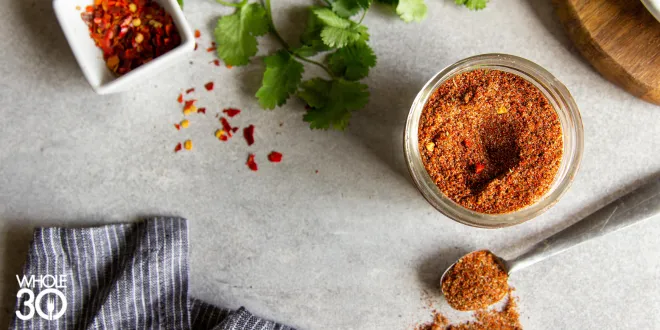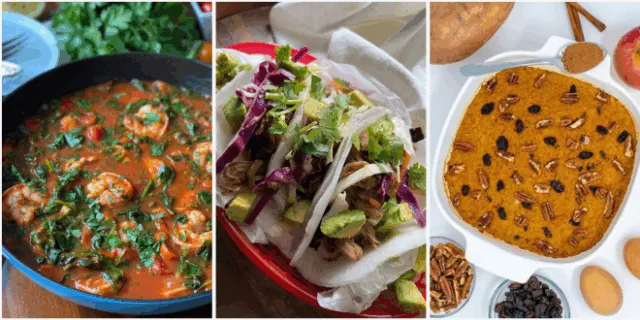There’s an appeal to putting parts of your life on autopilot. However, when it comes to your meals, constant repetition can wreak havoc. Flavor fatigue is real!
Follow along for a better understanding of flavor fatigue and learn tips to help you fight back. Use this simple, easy advice when you’re meal planning, prepping, or already cooking.
What is flavor fatigue?
While flavor or taste fatigue might be newer terms, they’re based on familiar concepts and have a foundation in human biology.
The concept behind flavor fatigue is simple. You get tired of eating the same food, with the same flavor profiles, too frequently. Sensory specific satiety—a scientific term for the idea that repeated exposure to the same food makes it less appealing—is proof that you can have “too much of a good thing.”
Humans crave new experiences. We’re excited by variety and newness. When it comes to our diets, there’s a reason you’re longing for variety—and it goes much deeper than your taste buds.
Your body longs for varied food choices because you need a broad spectrum of nutrients to power all you do in a day. That’s why advice from nutritional experts frequently focuses on eating a diverse diet. It’s also why the goal of your Whole30 elimination and reintroduction is to create the broadest selection of foods you can eat happily and comfortably in your food freedom.
Use these simple tips for tackling taste fatigue
Adding variety to your diet doesn’t require hours of planning, shopping, prepping, and cooking. There are a number of quick, easy ways to fend off flavor fatigue before it sets in.
Here are a few ideas you can try:
Find inspiration from around the world
The variety of delicious food made around the world is astonishing. Bringing your curiosity to the culinary cornucopia of world cuisine is the first step to finding nearly endless variety and excitement. Seek meal planning inspiration from around the globe, and look at fusing elements of different world cuisines into your standard rotation. In the process, you’ll win the fight against flavor fatigue while learning about new cultures. That’s a delicious combination.
Flip the flavor profile with new spices
Spices are an easy in-road to exploring the cuisine of another country or culture. Many cultural foodways feature key spices used to flavor various staple dishes. Think of garam masala, hing, and cumin in India; or the harissa, paprika, and turmeric of Northern Africa.
Exciting new spice blends can enliven your regular rotation of proteins. Roasted veggies or scrambled eggs become a vehicle to transport your taste buds to a delicious destination halfway around the world with a pinch of this and a dash of that.
Herbs are your best friend
Like spices, herbs are important flavor touchstones. A chiffonade of basil is all you need to take a spaghetti squash bolognese to another level of Mediterranean goodness. You can apply that principle to alter the profile of many different dishes, which will help you win the battle with flavor fatigue. As with spices, take your cues from cultures around the world to find herbal inspiration.
Try shiso leaves from Japan, Herbes de Provence from France, or lemongrass from Southeast Asia.
Add texture to change the eating experience
Enjoying food is more complex than satisfying the list of taste buds taught in elementary school. Texture is a huge component of the eating experience. (If you watch cooking competition shows, you’ll understand the importance placed on texture by chefs and food critics alike.)
Use texture as a trick to help make a familiar dish feel different. The crunch of a pistachio crust on your baked cod adds dimension and enhances mouthfeel. Roasting your broccoli until it’s caramelized provides a totally different texture than steaming it. The texture alone can transform familiar ingredients and flavor profiles into a fresh eating experience to help stave off sensory specific satiety.
Get saucy
Adding new sauce to a dish in heavy rotation is an absolute flavor game changer. The sauce can bring herbaceous, spicy, umami, or other unique tastes to your daily veggie scramble, lunchtime salad, or protein patties with sweet potato. Flavor fatigue is a thing of the past when you’re adding pesto sauce one day, a buffalo aioli the next, and finishing the week by spooning on fire-roasted salsa.
Vary your protein
Not everything tastes like chicken. In fact, you don’t even have to venture out of the poultry section to find a variety of tastes.
For meat eaters, if beef is getting boring, substitute in the pleasant gaminess of lamb. Experiment with different fish and enjoy the diversity of flavor you can find when you swap halibut for swordfish. There are a lot of easily accessible protein choices at your local grocery store. So toss in a package of steelhead trout instead of salmon or opt for turkey instead of chicken at the meat counter.
For those who prefer a plant-based eating approach, you can blend silken tofu into your smoothie, and air-fry firm tofu for your next meal. Eat whole pinto beans, or add a side of mashed refried beans to your meal. Try a different form of your favorite plant-based meat, from “chorizo” to “chopped chick’n.”
Try a new vegetable
It might seem like they’re coming out with new vegetables all the time—like, when did they invent purple cauliflower or kohlrabi? The truth is that we’re lucky to live in a time when it’s easy to enjoy a huge variety of produce. These “new vegetables” are just those we couldn’t access before.
Taking advantage of that variety will keep flavor exhaustion at bay while also setting you up for nutritional success. Opt for romanesco instead of broccoli or cauliflower. Add sweet potato to your hash for a note of subtle sweetness. Or finally figure out what kohlrabi tastes like—its lightly sweet and peppery could be a nice, crunchy addition to your salad.
Switch up the cooking method
Nobody mistakes boiled potatoes for those roasted in olive oil. And that understanding about cooking methods can help you vary the flavor and eating experience of your dishes.
How you cook your ingredients determines not just the texture of the meal, but also the flavors you’re able to tease out. Let’s go back to the boiled vs. roasted potato example. Boiling means a softer texture and limited taste enhancement, whereas roasting can provide caramelization that adds depth of flavor and deliciousness to your potatoes.
If you’re stuck in a flavor rut, add a charred touch on the grill, marinate protein in a flavorful liquid, or blanch your green beans in salted water to retain their fresh flavor and joyful snap.
Put flavor fatigue in your culinary rearview mirror
You can simplify your day-to-day in many ways. But remember that adding variety, interest, and uniqueness to your life—especially at mealtime—is often worth the small amount of extra effort.
You now have many tools to fight the monotony of flavor fatigue while keeping your meal prep simple. Use these tools daily to inject adventure into your eating, and wave goodbye to taste fatigue forever.
















